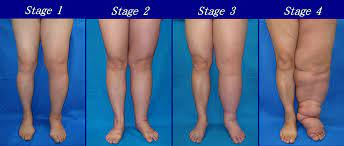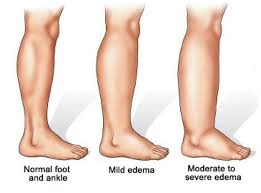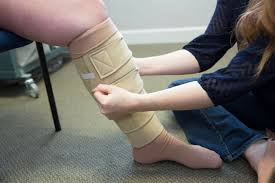Breaking Down Lymphedema: What You Need to Know About This Condition
Ever wondered why some people experience swelling in their arms or legs without an apparent reason? Lymphedema could be the answer. This blog post will guide you through the ins and outs of this condition, from understanding its two types, symptoms, and early warning signs to its diagnosis, treatment options, and complications. Let’s embark on this journey to unveil the secrets of Lymphedema and learn how to manage it effectively.
Key Takeaways
- Lymphedema is a chronic condition caused by malfunctioning lymphatic system, resulting in swelling of body tissues.
- Early detection and intervention are key to managing it effectively, as well as being aware of subtle signs & symptoms such as limb swelling or skin changes.
- Complex Lymphedema Therapy (CLT) is the primary form of treatment for relief from complications & challenges associated with living with Lymphedema.
Defining Lymphedema
Lymphedema is a chronic condition characterised by swelling in the body’s tissues due to a malfunctioning lymphatic system. The lymphatic system is an essential part of our immune system, playing a crucial role in fighting infection and maintaining fluid balance throughout the body by transporting a fluid called lymph. When lymph nodes or lymph vessels become blocked or damaged, excess fluid accumulates in the affected body tissues, leading to Lymphedema.
Lymphedema primarily manifests in two forms: primary and secondary. The swelling associated with this condition stems from these two types. Primary Lymphedema, a rare inherited condition, arises from abnormal lymphatic system development, while secondary Lymphedema, which is more common, results from surgery, radiotherapy, or other medical conditions causing damage or blockage to the lymphatic system. We shall delve into these types further.
Primary Lymphedema
Primary Lymphedema is a rare, inherited condition caused by abnormal development of the lymphatic system. Due to its genetic nature, primary Lymphedema can manifest at any age, with symptoms usually starting during infancy, adolescence, or early adulthood.
Despite primary Lymphedema being less prevalent than secondary Lymphedema, understanding and recognising its symptoms remain critical. Prompt recognition and early detection can lead to effective management of the condition, thus preventing complications and enhancing the quality of life for those affected.
Secondary Lymphedema
Secondary Lymphedema is caused by damage to or blockage of the lymphatic system due to surgery, trauma, or radiation therapy. It is more common than primary Lymphedema, and the signs can appear at any time, even years after the lymphatic system has been damaged or blocked.
Some examples of surgery that may cause secondary Lymphedema include breast cancer surgery or sentinel lymph node biopsy. In these procedures, damage to the lymphatic system can lead to the development of Lymphedema, either immediately or years down the line. Recognising the signs and seeking immediate intervention is key to minimising the risk.
Symptoms and Early Warning Signs
Detecting the symptoms and early warning signs of Lymphedema is vital for timely intervention and management. The telltale signs include swelling in certain body parts, such as an arm or leg, feeling tightness when wearing clothes or jewelry, and changes in the skin.
Intermittent early warning signs can include swelling in limbs or other body parts, tightness in clothing or jewelry, and skin changes. It’s important to note that these signs can be subtle and may come and go, making it crucial to pay close attention to any changes in your body.
Should you suspect Lymphedema or experience any of its symptoms, consulting with a healthcare professional is of utmost importance. Early intervention aids in managing the condition, preventing it from exacerbating, and ultimately enhancing your quality of life.
Incidence and Risk Factors
Lymphedema affects a significant number of people, with primary Lymphedema estimated to affect 1 in 6,000 individuals. Secondary Lymphedema is more common, affecting around 20% of breast cancer survivors and 36-47% of vulval cancer survivors, likely due to the impact on cancer cells during treatment.
Risk factors associated with the development of Lymphedema include:
- Damage to the lymphatic system
- Certain medical treatments, such as radiation therapy and extensive lymph node dissection
- Lifestyle factors, such as obesity and a lack of physical activity
These factors may increase the risk of developing Lymphedema.
Knowledge of the risk factors and prevalence of Lymphedema allows individuals to undertake preventive measures and seek early intervention when necessary. Prompt recognition and addressing of the signs can help curb the progression of the condition and enhance the overall quality of life.
Diagnosing Lymphedema
Diagnosing Lymphedema involves a thorough assessment of the patient’s history, a physical examination, and ruling out other causes of swelling. If the healthcare professional suspects Lymphedema, imaging tests such as MRI, CT, or ultrasound scans may be performed to confirm the diagnosis.
In some cases, the following diagnostic tests may be utilised:
- Blood tests to measure levels of certain substances in the blood
- Imaging tests such as X-rays or CT scans to visualise the affected area
- Biopsy to remove a small sample of tissue for further examination
- Bioimpedance testing, a diagnostic test that measures changes in the strength of an electric current to detect fluid in tissue
Once a diagnosis is confirmed, the healthcare team will work with the patient to develop a tailored cancer treatment plan to manage the condition effectively.
Early diagnosis and intervention are pivotal in managing Lymphedema. Recognition of the signs and symptoms allows individuals to:
- Seek timely medical attention
- Initiate the appropriate treatments
- Avert complications
- Uphold their quality of life.
Treatment Options for Lymphedema
Lymphedema treatment primarily focuses on managing symptoms through complex Lymphedema therapy (CLT). CLT includes various components, such as:
- Compression garments
- Skincare
- Exercise
- Manual lymphatic drainage
These components work together to reduce fluid accumulation and promote the flow of lymph fluid through the lymphatic system.
Compression garments play a vital role in managing Lymphedema by applying gentle pressure to the affected limb, promoting lymphatic drainage, and preventing fluid build-up. Skincare is also essential to maintaining the integrity of the skin and preventing infections, while exercise helps improve lymphatic circulation and overall well-being.
In addition to CLT, there are surgical treatments available for certain cases of Lymphedema, which we will discuss in the following subsection.
Surgical Treatments
Surgical treatments for Lymphedema include:
- Liposuction: involves removing excess fat from the affected limb, helping to reduce its size and alleviate symptoms. After liposuction, it is recommended that patients wear a compression garment on the treated limb day and night for at least one year to help reduce swelling.
- Lymph node transfer: involves transferring healthy lymph nodes from one part of the body to the affected limb to improve lymph drainage.
- Lymphaticovenular anastomosis (LVA): an experimental technique that involves connecting lymphatic vessels to nearby veins to bypass blocked or damaged lymph nodes.
These surgical treatments, along with radiation treatment, can provide relief and improve the symptoms of Lymphedema.
While surgical treatments can provide relief for some Lymphedema patients, they may not be suitable for everyone. Access to these procedures may be restricted, depending on the individual’s medical history and the availability of treatment options provided by their local healthcare providers.
Complications and Challenges
Lymphedema can present various complications, such as infections, deep vein thrombosis (DVT), functional impairment, and psychological challenges. Infections, such as cellulitis, are a common concern for individuals with Lymphedema due to the increased risk of bacteria entering the body through compromised skin.
Prompt intervention and continuous management are paramount in preventing and addressing these complications. Recognition of the signs and symptoms of Lymphedema and prompt treatment can help individuals reduce the risk of complications and uphold their quality of life.
Living with Lymphedema also presents psychological challenges. The chronic nature of the condition can evoke feelings of frustration, depression, and anxiety. It’s vital to communicate these challenges with your healthcare team, as there are treatments and support mechanisms available to help you cope and preserve your mental well-being.
When should I seek professional help for lymphedema in the feet, and what can a podiatrist do to help?
It is recommended to seek professional help from a podiatrist if you suspect you have lymphedema in the feet. A podiatrist can provide a comprehensive evaluation, confirm the diagnosis, and develop a personalised treatment plan based on your specific needs. They can guide you through proper self-care techniques, offer recommendations for compression therapy, and collaborate with other healthcare professionals to ensure comprehensive management of your condition. Remember, early intervention and consistent management are key to effectively managing lymphedema in the feet and maintaining optimal foot health.
Lymphedema in the feet can be a challenging condition, but with the right approach and guidance from a trusted podiatry clinic like Hurst Podiatry, effective management and symptom relief are possible. By seeking professional help, you can receive a proper diagnosis, personalised treatment plan, and ongoing support throughout your journey.
Hurst Podiatry understands the impact that lymphedema can have on your daily life and is dedicated to providing comprehensive care to improve your foot health and overall well-being. Their experienced podiatrists can offer a range of treatments, including manual lymphatic drainage, compression therapy, exercise guidance, and self-care techniques.
With the help of Hurst Podiatry, you can learn how to manage and minimise the symptoms of lymphedema in your feet, reduce swelling, and enhance your quality of life. Their compassionate approach ensures that you receive the support and education necessary to effectively care for your feet and prevent complications.
Don’t let lymphedema hold you back. Contact Hurst Podiatry today and take the first step towards finding relief and regaining control over your foot health. Remember, you are not alone, and there are professionals ready to help you on your journey to managing lymphedema in the feet.






